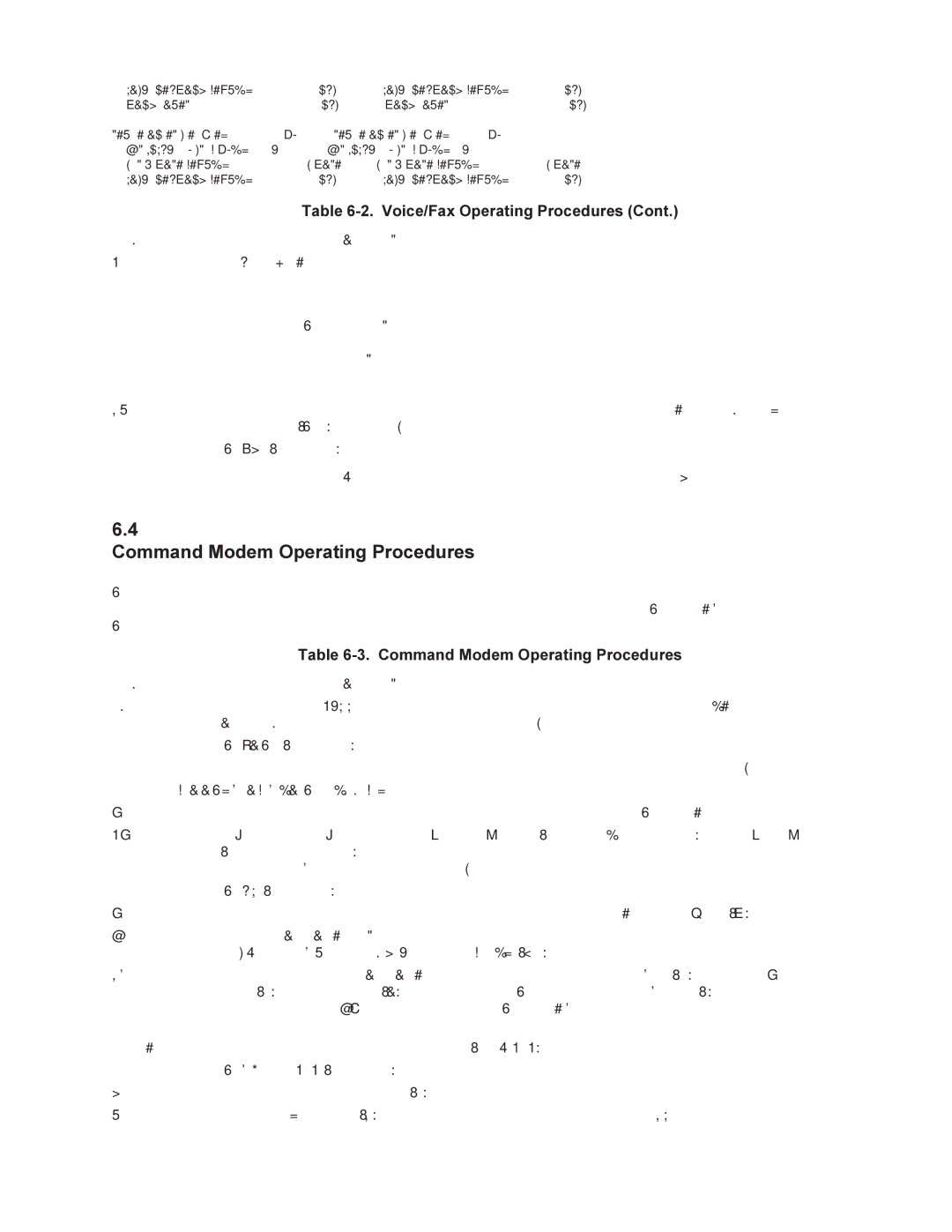DIALTONE/WINK (E&M): | N/A | DIALTONE/WINK (E&M): | N/A |
WINK TIMER | N/A | WINK TIMER | N/A |
REMOTE INTERFACE TYPE: | FXS | REMOTE INTERFACE TYPE: | FXS |
GROUND/LOOP START (FXS): | LOOP | GROUND/LOOP START (FXS): | LOOP |
2 OR 4 WIRE (E&M): | 2 WIRE | 2 OR 4 WIRE (E&M): | 2 WIRE |
DIALTONE/WINK (E&M): | N/A | DIALTONE/WINK (E&M): | N/A |
Table 6-2. Voice/Fax Operating Procedures (Cont.)
StepProcedure
2To reconfigure the Voice/Fax channel parameters to match your actual requirements enter commands as described in Chapter 5 of this manual.
Note
A word of caution here, if you change your remote interface parameters and your operation seems to become erratic, recheck your remote parameters and verify them with your remote site.
3If you change parameters they are not incorporated into your running system until you execute a Store New Parameters (&W) command:
AT&W (hit Return)
The parameters will be stored in
6.4
Command Modem Operating Procedures
A wide variety of autodial operations and modem options can be controlled when the command modem is in the command mode. Command modem access commands are described in Chapter 5. Appendix D describes the general AT commands in detail.
Table 6-3. Command Modem Operating Procedures
StepProcedure
1Set your supervisory console to 2400 bps or less to communicate with the command modem. Execute the Command Modem Select command by entering the following:
AT#MA1 (hit Return)
The following will be displayed on your supervisory console when connected and in command mode:
COMMAND MODEM ACCESS ON |
|
You may now enter the commands for the command modem as | described in Appendix F. |
2You can have the "Result Codes" displayed in a “verbose” format (complete English words), or in a “terse” format (single digit numbers). The factory default format is verbose. To change to terse format, enter the Result Code Digit command as follows:
ATV0 (hit Return)
You can also choose to completely eliminate the display of all Result Codes by executing a Quiet (Q) command.
Before dialing your remote MultiMux, make sure that it is ready to accept calls through its command modem by having its
3Dial the phone number of your remote MultiMux. To dial a phone number, use the Dial (D) command. You can use Tone (T) dialing or Pulse (P) dialing and insert Automatic Pauses in Dialing (,) for functions such as dialing through a PBX switchboard. Refer to Appendix D for detailed descriptions of dialing commands.
For example, enter the following to dial a phone number
ATD9,5551212 (hit Return) |
|
When a carrier signal is detected, the Connect (1) Result Code is displayed. |
|
If no carrier is detected, the No Carrier (3) Result Code is displayed after | about 30 seconds. |
